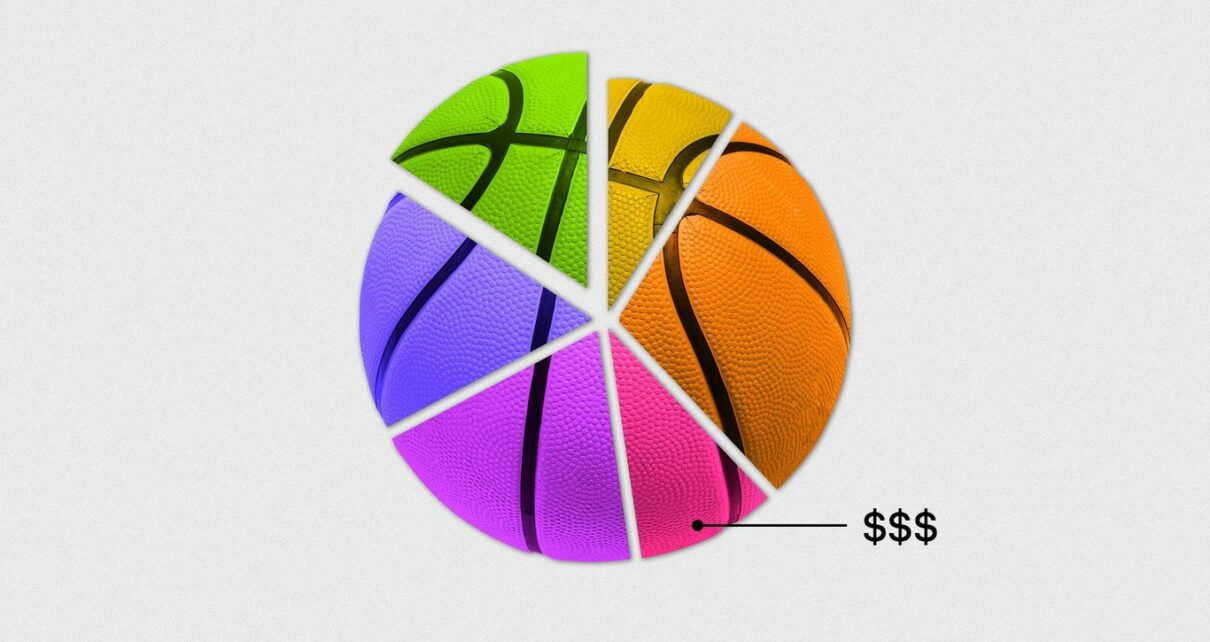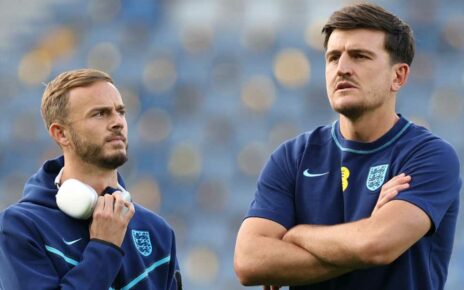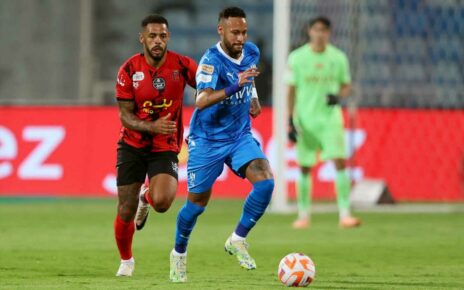
Illustration: Eniola Odetunde/Axios
As the NCAA's name, image and likeness (NIL) compensation policy nears its second birthday, college basketball players are showing the myriad ways in which value can be measured and monetized.
State of play: The men's and women's Sweet 16 features players whose NIL earnings come from a variety of factors including on-field performance, social media influence and overall exposure.
- Superstars: All-Americans Drew Timme (Gonzaga), Marcus Sasser (Houston) and Caitlin Clark (Iowa) are all near the top of On3's NIL valuation rankings for men's and women's basketball players, having signed deals with brands like Pringles (Timme), Bose (Sasser) and Nike (Clark). Sometimes, it's as simple as being extremely talented.
- Influencers: Miami's Haley and Hanna Cavinder — twins who top On3's women's rankings — amassed 4.4 million followers on their shared TikTok account during the pandemic. They were recently at the center of the first-ever NIL infraction stemming from their recruitment as transfers from Fresno State, but only Miami's program and coach were sanctioned.
- Multi-hyphenate: LSU's Flau'jae Johnson averages 12 points and 6 rebounds per game, and she's also a rapper. The Georgia native has NIL deals with Puma and Meta, as well as a music distribution deal with Jay-Z's Roc Nation.
- Booster-led deals: Nijel Pack transferred from Kansas State to Miami, where he received a two-year, $800,000 deal from booster John Ruiz's company, LifeWallet. Teammate Isaiah Wong also has a $100,000 LifeWallet deal.
- The perfect fit: Kansas State's Keyontae Johnson nearly died in 2020 after collapsing on the court due to heart inflammation. Now, he has a deal with nonprofit Heartfelt, which aims to save lives by educating the public about heart issues.
- Power in numbers: Arkansas (Conagra Brands) and Houston (Actively Black sportswear) are among the programs that have signed team-wide NIL deals, rather than singling out individual players.
The big picture: Men's (20.6% of all compensation) and women's (10.2%) basketball players have earned nearly one-third of all NIL money since its July 2021 launch, per Opendorse. That's by far the most of any sport outside of football (55.1%), which dominates.
- Brands account for over 80% of NIL deals but just 37% of compensation, with payments from wealthy donors (i.e., boosters or collectives) comprising more than 60% of all NIL money.
- That discrepancy is at the heart of what will shape NIL in year three and beyond, as it is boosters — not brands — who keep the NCAA up at night with their potential to turn NIL into a de facto pay-for-play system.
Source: Read Full Article


